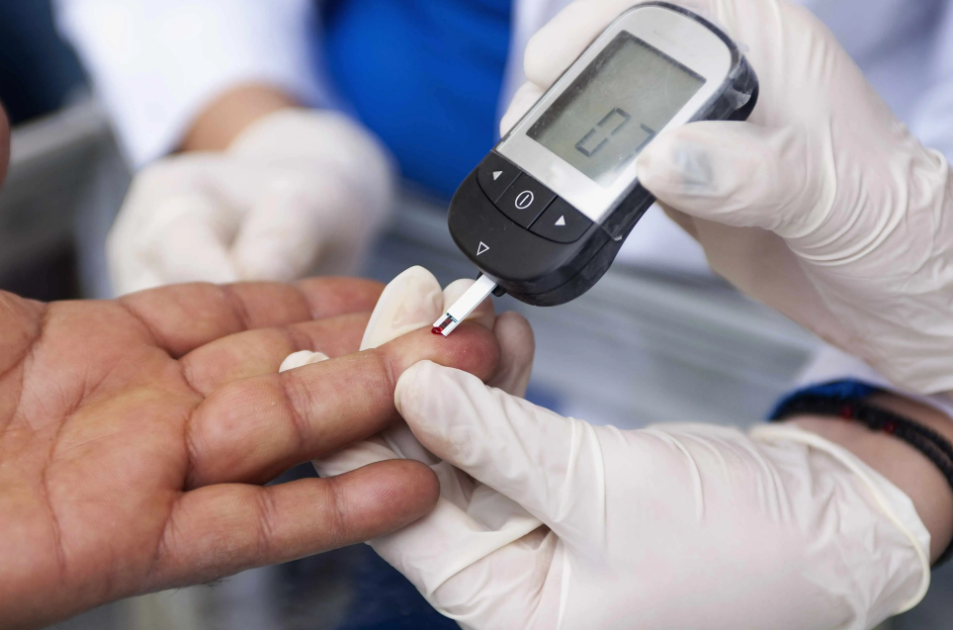കൊളസ്ട്രോൾ എന്ന് കേട്ടാലേ ടെൻഷൻ അടിക്കേണ്ട…. കൊളസ്ട്രോളിന്റെ പ്രവർത്തനങ്ങൾ മനസിലാക്കാം ….
നമ്മുടെ ശരീരത്തിലടങ്ങിയിരിക്കുന്ന കൊഴുപ്പിന്റെ മറ്റൊരു രൂപം മാത്രമാണ് കൊളസ്ട്രോൾ.എല്ലാരുടെയും ശരീരത്തിലും കൊളസ്ട്രോൾ ഉണ്ട്.
അതെ , കൊളസ്ട്രോൾ നമ്മുടെ ശരീരത്തിന്റെ അവിഭാജ്യ ഘടകമാണ് എന്നത് നിങ്ങളിൽ എത്ര പേർക്ക് അറിയാം ?
കരൾ ഉത്പാദിപ്പിക്കുന്നതും ശരീരത്തിലെ എല്ലാ കോശങ്ങളിലും കാണപ്പെടുന്നതുമായ ഒരു സുപ്രധാന പദാർത്ഥമാണ് കൊളസ്ട്രോൾ. ശരീരത്തിന്റെ ഒരുപാട് പ്രവർത്തനങ്ങൾക്ക് കൊളസ്ട്രോൾ കൂടിയേ തീരൂ . കോശ സ്തരങ്ങൾ അഥവാ cell membrane നിർമ്മിക്കുന്നതിനും ,ഈസ്ട്രജൻ, ടെസ്റ്റോസ്റ്റിറോൺ തുടങ്ങിയ ഹോർമോണുകൾ ഉത്പാദിപ്പിക്കുന്നതിനും ,വിറ്റാമിൻ എ, ഡി, ഇ, കെ തുടങ്ങിയ കൊഴുപ്പ് ലയിക്കുന്ന വിറ്റാമിനുകൾ ആഗിരണം ചെയ്യാനും ശരീരത്തെ സഹായിക്കുന്നതിൽ കൊളസ്ട്രോളിന്റെ പങ്ക് വളരെ വലുതാണ്.
ഒരുപാടു തരത്തിലുള്ള കൊളസ്ട്രോളുകളുണ്ട്. അതിൽ പ്രധാനമായും നമുക്കറിയാവുന്നതാണ് LDL (Low Density Lipoprotein) and HDL (High Density Lipoprotein).
HDL എന്നാൽ നല്ല കൊളസ്ട്രോൾ എന്നും LDL എന്നാൽ ചീത്ത കൊളസ്ട്രോൾ എന്നും നമുക്കറിയാം .
HDL എന്തൊക്കെ ചെയ്യുന്നു എന്ന് നോക്കാം .
HDL രക്തപ്രവാഹത്തിൽ നിന്നും പെരിഫറൽ ടിഷ്യൂകളിൽ നിന്നും അധിക കൊളസ്ട്രോൾ വിസർജ്ജനത്തിനായി കരളിലേക്ക് കൊണ്ടുപോകുന്നു.HDL നു ആൻ്റിഓക്സിഡൻ്റ് ഗുണങ്ങളുണ്ട്, ഇത് ഓക്സിഡേറ്റീവ് സ്ട്രെസ്, വീക്കം എന്നിവയിൽ നിന്ന് സംരക്ഷിക്കാൻ സഹായിക്കുന്നതോടൊപ്പം ഹൃദയാരോഗ്യം മെച്ചപ്പെടുത്തുന്നു .രക്തക്കുഴലുകളുടെ പ്രവർത്തനം മെച്ചപ്പെടുത്താനും രക്തസമ്മർദ്ദം കുറയ്ക്കാനും എച്ച്ഡിഎൽ സഹായിക്കുന്നു.
LDL (ലോ-ഡെൻസിറ്റി ലിപ്പോപ്രോട്ടീൻ) കരളിൽ നിന്ന് ധമനികൾ, പേശികൾ, തുടങ്ങിയ പെരിഫറൽ ടിഷ്യൂകളിലേക്ക് കൊളസ്ട്രോൾ എത്തിക്കുന്നതിൽ നിർണായക പങ്ക് വഹിക്കുന്നു. ഈ പ്രക്രിയ ഊർജ്ജ ഉൽപാദനത്തിനും കോശ വളർച്ചയ്ക്കും കോശ സ്തര ഘടനയുടെ പരിപാലനത്തിനും ആവശ്യമായ കൊളസ്ട്രോൾ കോശങ്ങൾക്ക് നൽകുന്നു.
എൽഡിഎൽ കൊളസ്ട്രോൾ കോശങ്ങളിലേക്ക് എത്തിക്കുന്നു, അത് ഊർജ്ജസ്രോതസ്സായി അല്ലെങ്കിൽ കോശ സ്തരങ്ങൾ നിർമ്മിക്കുന്നതിനും നന്നാക്കുന്നതിനും ഉപയോഗിക്കുന്നു. കൂടാതെ, ശരിയായ കോശ പ്രവർത്തനം ഉറപ്പാക്കിക്കൊണ്ട്, മെംബ്രൻ ദ്രവ്യത നിയന്ത്രിക്കാൻ എൽഡിഎൽ സഹായിക്കുന്നു.
LDL ൻ്റെ പ്രവർത്തനങ്ങൾ അത്യന്താപേക്ഷിതമാണെങ്കിലും, ആരോഗ്യകരമായ അളവ് നിലനിർത്തുന്നത് ഒരുപോലെ പ്രധാനമാണ്, കാരണം അമിതമായ എൽഡിഎൽ ധമനികളിൽ കൊഴുപ്പ് അടിഞ്ഞുകൂടുന്നതിനും ഹൃദ്രോഗത്തിനും പക്ഷാഘാതത്തിനും സാധ്യത വർദ്ധിപ്പിക്കുന്നതിന് ഇടയാക്കും.
നമ്മുടെ ആരോഗ്യം നിലനിർത്തുന്നതിൽ എച്ച്ഡിഎൽ, എൽഡിഎൽ കൊളസ്ട്രോൾ സുപ്രധാന പങ്ക് വഹിക്കുന്നു. നമ്മുടെ രക്തപ്രവാഹത്തിൽ നിന്ന് അധിക കൊളസ്ട്രോൾ നീക്കം ചെയ്യാൻ എച്ച്ഡിഎൽ അശ്രാന്തമായി പ്രവർത്തിക്കുമ്പോൾ, എൽഡിഎൽ നമ്മുടെ കോശങ്ങളിലേക്ക് അവശ്യ കൊളസ്ട്രോൾ എത്തിക്കുന്നു. എന്നാലും , ഈ രണ്ട് തരത്തിലുള്ള കൊളസ്ട്രോൾ തമ്മിലുള്ള അസന്തുലിതാവസ്ഥ ഹൃദ്രോഗവും പക്ഷാഘാതവും ഉൾപ്പെടെ ഗുരുതരമായ പ്രത്യാഘാതങ്ങൾ ഉണ്ടാക്കും.
HDL, LDL എന്നിവയുടെ പ്രവർത്തനങ്ങളും പ്രാധാന്യവും മനസ്സിലാക്കുന്നതിനോടൊപ്പം, സമീകൃതാഹാരം സ്വീകരിക്കുക, പതിവായി വ്യായാമം ചെയ്യുക, സമ്മർദ്ദം നിയന്ത്രിക്കുക എന്നിങ്ങനെയുള്ള നടപടികൾ കൈക്കൊള്ളാം. ആരോഗ്യകരമായ കൊളസ്ട്രോളിൻ്റെ അളവ് നിലനിർത്താനും, ആത്യന്തികമായി, നമ്മുടെ ഹൃദയാരോഗ്യവും മുഴുവനായുള്ള ക്ഷേമവും സംരക്ഷിക്കുന്നതിന് HDL-നും LDL-നും ഇടയിൽ ശരിയായ ബാലൻസ് നിലനിർത്തുന്നത് നിർണായകമാണ്.








